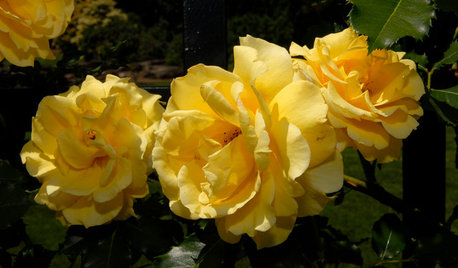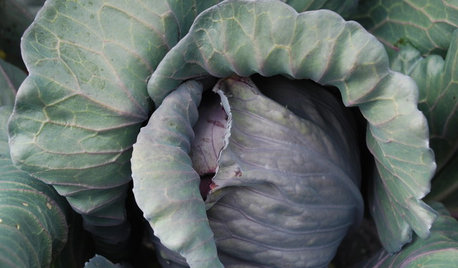Yellow/orange ooze from Apple pruning cut
steve333_gw
11 years ago
Related Stories

WINTER GARDENINGPruning Secrets for Exquisite Roses
Encourage gorgeous blooms year after year with this time-tested advice on how to prune your rosebush in winter for health and shape
Full Story
EDIBLE GARDENSHow to Add an Apple Tree to Your Edible Garden
Readily available, beautiful and fragrant, apple trees offer four-season interest along with crisp, juicy fruit
Full Story
DECORATING GUIDESStep Away From the Wallpaper: Why Decorating Risks Are Overrated
Want to find your signature style? Try staying inside your comfort zone
Full Story
GARDENING GUIDES5 Favorite Yellow Roses for a Joyful Garden
Make 'cheery' the name of your garden game when you order your roses sunny side up
Full Story
DECORATING GUIDESNature’s Color Wisdom: Lessons on Green From the Great Outdoors
Green will grow on you for interiors when you look outside for ideas on how to use it
Full Story
DECORATING GUIDESLighten Up — or Brighten Up — With Yellow
You can use this versatile color to create a buttery backdrop, add a zesty accent or make a bold design statement
Full Story
FUN HOUZZDon’t Be a Stickybeak — and Other Home-Related Lingo From Abroad
Need to hire a contractor or buy a certain piece of furniture in the U.K. or Australia? Keep this guide at hand
Full Story
DECORATING GUIDESWhat We Can Learn From the Minimalists
Discover the power of simplicity and how to employ a less-is-more approach in your decorating scheme
Full Story
FALL GARDENING11 Trees for Brilliant Fall Color
Give your landscape the quintessential look of autumn with the red, orange and yellow leaves of these standouts
Full Story






megamav
Scott F Smith
Related Professionals
Baltimore Landscape Architects & Landscape Designers · Hyattsville Landscape Architects & Landscape Designers · Quincy Landscape Architects & Landscape Designers · West Chester Landscape Architects & Landscape Designers · Willowick Landscape Architects & Landscape Designers · Bedford Landscape Contractors · Bergenfield Landscape Contractors · Essex Landscape Contractors · Federal Way Landscape Contractors · Fort Mill Landscape Contractors · Point Pleasant Landscape Contractors · Riverview Landscape Contractors · San Benito Landscape Contractors · Setauket-East Setauket Landscape Contractors · Yuba City Landscape Contractorssteve333_gwOriginal Author
jean001a
strobiculate
steve333_gwOriginal Author
Scott F Smith